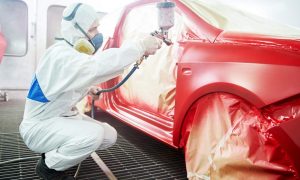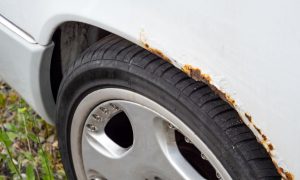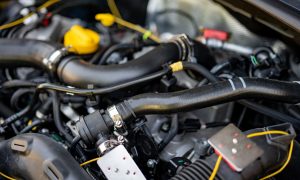Range Rover. Just hearing the name feels like money well spent. These vehicles symbolize strength wrapped in pure luxury. They glide over bumps like they’re not even there. But here’s the catch. Even luxury has limits. Range Rovers have their share of mechanical surprises. Ask any owner, and you’ll hear a few tales of sudden warnings or unexpected repair bills.
This guide covers the Most Common Range Rover Problems and Solutions in clear, honest terms. No fluff. No complicated jargon. Just real talk about what goes wrong—and how to make it right. If you own one, this isn’t about complaining. It’s about staying ahead. Consider this your maintenance manual written by someone who’s seen too many “check engine” lights come and go.
Gearbox Troubles

A smooth gearbox defines the Range Rover’s character. When it starts misbehaving, everything feels off. Shifting becomes jerky, and that silky drive suddenly feels clunky.
Owners often report delayed gear changes, loud whining, or warning lights that appear after long drives. The culprit? Usually, worn solenoids, low transmission fluid, or outdated software.
The Solution
Start with the basics. Check the transmission fluid level and condition. Dark or burnt-smelling fluid signals trouble. Top it up only with Land Rover-approved fluid.
Still rough? Visit a trusted mechanic for a diagnostic scan. Sometimes the issue lies in the gearbox’s control module. Land Rover releases software updates that can fix timing delays and shift irregularities.
If parts are worn, replacement is inevitable. Rebuilding the gearbox isn’t cheap, but it’s better than ignoring the issue. Once damage spreads, repairs can cost more than a used compact car.
Regular maintenance is your best defense. Gearboxes last when treated with respect. Skip aggressive driving, and warm the vehicle before long trips.
Drivetrain Issues
The drivetrain is what connects the engine’s power to the wheels. It’s the muscle beneath the elegance. But even muscles can cramp.
Some Range Rover owners report vibrations or clunks when accelerating. Others feel uneven power delivery or hear knocking sounds beneath the car.
These symptoms often point to a failing driveshaft or a faulty transfer case. Sometimes, simple wear and tear is to blame.
The Solution
A mechanic should inspect the driveshaft and joints. Worn joints cause vibrations, especially at high speeds. Replacing them restores balance and power flow.
If the transfer box malfunctions, reprogramming or replacement may be needed. Regularly changing drivetrain oil prevents premature wear.
It’s easy to forget this system exists until it complains. Listen early, and you’ll save yourself thousands. Ignore it, and your Range Rover may end up in limp mode on the highway.
Smooth driving helps too. No hard launches or sudden braking on uneven ground. Treat the drivetrain as the spine of your SUV—it deserves proper care.
Suspension Component Failures
Range Rover suspension systems are a marvel of comfort. They make potholes feel like tiny ripples. Unfortunately, they’re also notorious for acting up.
One day, your car stands tall. The next, it leans to one side like it’s had a rough night. That’s a sign of air suspension failure.
Owners often hear hissing sounds or see “suspension fault” messages. Compressors wear out, air springs leak, or sensors misread height data.
The Solution
Start by listening. If the compressor runs constantly, there’s likely a leak. Spray soapy water on air springs and hoses to spot escaping bubbles.
If leaks aren’t visible, the compressor may be too weak to maintain pressure. Replacing it usually solves the issue.
Sometimes, height sensors fail, causing confusion for the system. A quick diagnostic check identifies faulty sensors within minutes.
To keep things steady, replace air springs in pairs. Mixing old and new parts throws the system off balance.
A healthy suspension means a happy drive. Check it regularly, especially before road trips.
Fuel System Leaks
Few things unsettle a driver faster than smelling fuel. Range Rovers have had their share of fuel leaks over the years, often caused by worn injector seals or cracked lines.
You might notice fuel drops under the car after parking. Or a faint gasoline odor near the hood. Performance may also dip slightly.
The Solution
Inspect the fuel lines in the engine bay and under the car. Replace any brittle hoses or loose clamps.
If injectors are leaking, changing the seals is essential. It’s a simple but crucial repair.
Work safely. Always perform checks in a well-ventilated area, away from flames or sparks.
A small leak can lead to big problems. Fuel leaks not only waste money—they risk fire. Act fast if you smell fuel.
Oil Filter Housing Leaks
Oil filter housing leaks are another familiar Range Rover issue. The leak often starts small, maybe a drop or two on your driveway. But it never stops there.
Over time, that tiny drip becomes a slick mess. Oil touches hot engine parts, and you smell burning oil through the vents.
The Solution
Inspect the oil filter housing gasket. If it’s cracked or flattened, it’s time for replacement.
Sometimes the housing itself warps due to engine heat. In that case, replacing the entire unit makes more sense.
After repair, clean the engine bay and monitor oil levels closely for a few days.
Prevention helps too. Regular oil changes with quality filters keep pressure stable and reduce stress on gaskets.
A clean engine doesn’t just look good—it runs longer.
Transmission Oil Pressure Issues
Low transmission oil pressure feels a lot like gearbox failure. The symptoms overlap—slipping gears, delayed response, and rough shifting.
The cause often lies in clogged filters, worn pumps, or contaminated transmission fluid.
The Solution
First, replace the transmission oil and filter. It’s a relatively inexpensive fix that can restore smooth operation.
If the problem continues, have a technician test oil pressure. A failing pump won’t circulate fluid properly.
Always keep the transmission clean. Dirt and debris are silent destroyers of pressure systems.
Don’t wait until the transmission light flashes. A small repair today prevents a massive bill tomorrow.
Engine Electrics (Crank Position Sensor)
Modern Range Rovers depend heavily on sensors. The crank position sensor is one of the most vital. It tells the engine computer when to fire the spark plugs.
When this sensor fails, the vehicle might stall, misfire, or refuse to start entirely. It’s frustrating—and surprisingly common.
The Solution
The fix is simple: replace the crank position sensor. It’s inexpensive and quick to install.
Before replacing, confirm with a diagnostic scan. Other sensors can mimic the same symptoms.
Keep connections clean and dry. Moisture often interferes with sensor signals.
A working sensor means a steady, reliable start every time. Skipping this repair only invites more headaches later.
Air Conditioning Issues
Few luxuries matter more than good air conditioning on a hot day. When it stops cooling, frustration follows.
Range Rover A/C issues often stem from low refrigerant, compressor failure, or blocked filters. Sometimes the fan motor gives up.
The Solution
Start with a pressure test. Low refrigerant means a leak somewhere in the system. Fix the leak before refilling.
If the compressor doesn’t engage, check its relay and clutch. A new compressor might be needed if it’s seized.
Replace cabin filters regularly. Clogged filters strain the system and reduce airflow.
A healthy A/C isn’t just about comfort—it also prevents humidity buildup inside the cabin. Keep it maintained, and your summer drives will feel brand new.
Wheel Nuts Cracking
This problem sounds small but can cause big trouble. Some Range Rovers use two-layer wheel nuts: steel inside, aluminum outside. Over time, corrosion causes them to swell or crack.
The result? You can’t remove them easily when you need to change a tire. Not fun on a dark roadside.
The Solution
Switch to one-piece steel nuts. They’re stronger, simpler, and don’t swell.
Always torque wheel nuts to the correct specification. Too tight, and threads may strip. Too loose, and wheels might wobble.
Ask your mechanic to inspect them during tire rotation. A few minutes of caution can save hours of roadside frustration.
Conclusion
Owning a Range Rover feels like driving confidence itself. The comfort, the power, the presence—it’s unmatched. But behind that glory lies responsibility.
These vehicles demand regular care. The Most Common Range Rover Problems and Solutions we’ve discussed prove that even luxury machines need attention.
From gearbox quirks to suspension hiccups, every issue tells a story of wear and design complexity. The more you understand your car, the less it surprises you.
Regular service is not just a routine—it’s an act of respect for your investment. Listen for new sounds, check for leaks, and treat your Range Rover with patience.
It will reward you with years of capable, luxurious driving. And when issues arise, remember—you now know exactly where to start.
Also Read: How to Choose the Right Paint Color After a Collision Repair
FAQs
Every 12 months or 10,000 miles. Consistent maintenance prevents small issues from becoming expensive repairs.
Low fluid or software problems are common causes. Have a technician perform a quick check.
Yes, especially in older models. Regular inspection helps catch leaks early.
Stop immediately and inspect for leaks. Fuel leaks are serious fire risks.




